Rob Sanders's Blog, page 10
July 10, 2012
Want To Play?: Imperial Navy Identification
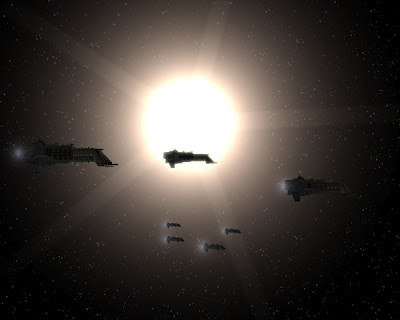
It's time to return to a recent, popular feature on the blog: Want To Play? Today I'm asking you to put your skills of vessel identification to the test. Each of the ships displayed below are taken from my Inquisitor Czevak novel Atlas Infernal. Czevak's adventures in Atlas Infernal take place across a colossal expanse of Imperial space and the damned region that is the Eye of Terror. As well as blistering action and intrigue on a myriad of twisted worlds, Atlas Infernal also contains a wealth of ship-to-ship naval action. Each of the vessels identified below feature in the novel. See if you can match the names to the pictorial representations given. Click for a closer look. Good luck. Answers up tomorrow!
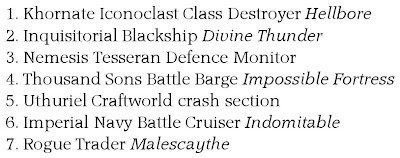
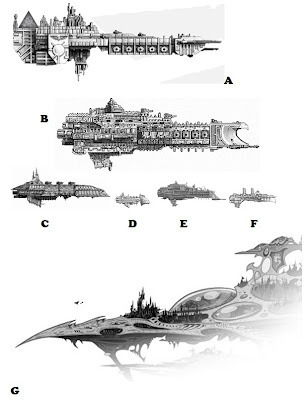
Published on July 10, 2012 09:22
July 9, 2012
‘You Don’t Want To Walk Around Down There, Snake!’

I was sad to hear that veteran character actor Ernest Borgnine died. He was 95 and was an actor with an impressive and wide-ranging filmography. He was one of those actors who had a face and a voice most people would recognise. He had worked across many different genres – serious drama, wartime adventures, science fiction and even children’s animation - and had starred in some truly genre-defining movies. This skill and range was recognised in 1955 when he won an Oscar for Best Actor in 1955.
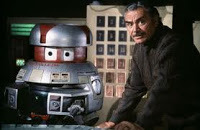 I loved watching him in war movies, westerns and disaster flicks from the 1970s that were on the television when I was kid. He often played harsh characters with a hidden,
I loved watching him in war movies, westerns and disaster flicks from the 1970s that were on the television when I was kid. He often played harsh characters with a hidden,
 tender side but his most memorable feature was that almost ear-to-ear grin he put to good work in his roles. I remember him most for his science fiction roles (unsurprisingly). I enjoyed him as journalist Harry Booth on board the USS Palomino, in Disney’s The Black Hole and I spent many a Saturday afternoon watching him as Dominic Santini - flight engineer on the high-tech military helicopter Airwolf.
tender side but his most memorable feature was that almost ear-to-ear grin he put to good work in his roles. I remember him most for his science fiction roles (unsurprisingly). I enjoyed him as journalist Harry Booth on board the USS Palomino, in Disney’s The Black Hole and I spent many a Saturday afternoon watching him as Dominic Santini - flight engineer on the high-tech military helicopter Airwolf.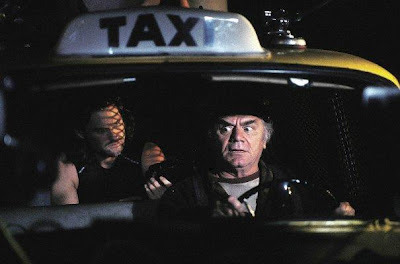
My favourite Ernest Borgnine role, without a doubt, is Cabbie from Escape from New York. In the film - by science fiction and horror director John Carpenter – Manhatten Island has been turned into a maximum security prison servicing the United States, with security operating from Liberty Island. When Air Force One crash lands on the island with the President on board, war hero and bank robber Snake Plissken (a brilliant Kurt Russell) is offered a deal upon entry to the prison island: get the President out and he will be awarded a presidential pardon. Snake meets a plethora of colourful characters in the city hellhole, including Brain (science fiction stalwart, Harry Dean Stanton) and the President himself (Donald Pleasance – no introduction needed). Ernest Borgnine plays Cabbie, who spends his days ferrying criminals about the dilapidated metropolis in a rusty, yellow New York cab. He saves Snake on several occasions, rolling up in his beat-up taxi just as things get hairy. For me, his most memorable line is: ‘You Don’t Want To Walk Around Down There, Snake!’
Published on July 09, 2012 03:54
July 6, 2012
Nexus 6 (6-7-12)
It’s that time again. These are my Nexus 6 choices for this week: genre related stuff I’ve been reading on the old interweb. Last week it was the trailer for Dredd that seemed to be causing the most controversy. This time we have:
1. Top 75 Spaceships From Movies and Television
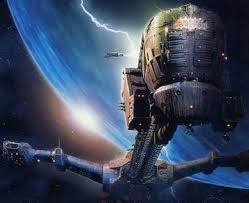
I love lists. The longer the better. Here ‘Den of Geek’ supplies 75 spaceships from famous TV programmes and films and rank orders them for us. Take some time to peruse the glorious designs and see if you agree with their order. The list can be found here.

2. George Lucas Isn’t The Only One Who Struggles With Dialogue

I came across this the other day. It is an interview with Mark Hamill and Harrison Ford on ‘The Today Show’ from 1980, dealing with the imminent release of The Empire Strikes Back. I love The Empire Strikes Back and for many fans it is the best of all the Star Wars films. It comes as a little bit a surprise, therefore, that two actors so intimately involved with the project and spent months shooting the film should be so ineloquent when describing it. At first the pair can hardly get the words together to talk about it at all. Then – like reluctant students in a class room – the two of them proceed to describe the project very badly and with a lack of cultural nuance that is likely to annoy many Star Wars fans. You also have to remember that Star Wars was already a colossal cultural phenomenon by then, so there’s really no excusing the casual approach taken by the pair to the project that made them so famous. Press Play and see for yourself.
3. Warhammer Leading The Way
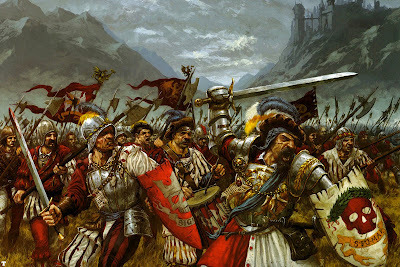
One of the many great things about Warhammer and Warhammer 40k is the immersive nature of their settings. It has something to do with verisimilitude: the games designers, artists and authors have a good understanding, not only of the genre but also their history. They produce material that has a keen sense of the possible about it – which is especially useful when dealing with the largely impossible. It’s therefore nice to see the acknowledged influence of Warhammer on other publishing enterprises, like this one from Gollancz. Check it out here.
4. Aliens Are Stupid

Let’s face it: aliens are stupid. They think they’re all that when they have helpless humans strapped to tables, but when they try their hand at any other kind of invading they come seriously unstuck. Cracked introduces us to ‘6 Giant Blind Spots In Every Movie Alien’s Invasion Strategy’. Tru dat. Check it out here.
5. ‘Mermaids Don’t Exist’: US Government

An interesting news item from the BBC here, putting our minds at rest that the seas are not stalked by aquatic mythological creatures. Perhaps the US Government would like to also give us some reassurance on Bigfoot, dragons and unicorns. File under The X-Files: Federal Bureau of Investigation – Basement Division.
6. ‘I Have The Power… point’
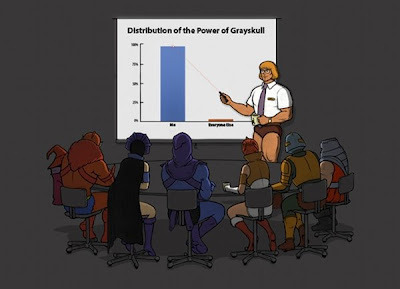

1. Top 75 Spaceships From Movies and Television

I love lists. The longer the better. Here ‘Den of Geek’ supplies 75 spaceships from famous TV programmes and films and rank orders them for us. Take some time to peruse the glorious designs and see if you agree with their order. The list can be found here.

2. George Lucas Isn’t The Only One Who Struggles With Dialogue

I came across this the other day. It is an interview with Mark Hamill and Harrison Ford on ‘The Today Show’ from 1980, dealing with the imminent release of The Empire Strikes Back. I love The Empire Strikes Back and for many fans it is the best of all the Star Wars films. It comes as a little bit a surprise, therefore, that two actors so intimately involved with the project and spent months shooting the film should be so ineloquent when describing it. At first the pair can hardly get the words together to talk about it at all. Then – like reluctant students in a class room – the two of them proceed to describe the project very badly and with a lack of cultural nuance that is likely to annoy many Star Wars fans. You also have to remember that Star Wars was already a colossal cultural phenomenon by then, so there’s really no excusing the casual approach taken by the pair to the project that made them so famous. Press Play and see for yourself.
3. Warhammer Leading The Way

One of the many great things about Warhammer and Warhammer 40k is the immersive nature of their settings. It has something to do with verisimilitude: the games designers, artists and authors have a good understanding, not only of the genre but also their history. They produce material that has a keen sense of the possible about it – which is especially useful when dealing with the largely impossible. It’s therefore nice to see the acknowledged influence of Warhammer on other publishing enterprises, like this one from Gollancz. Check it out here.
4. Aliens Are Stupid

Let’s face it: aliens are stupid. They think they’re all that when they have helpless humans strapped to tables, but when they try their hand at any other kind of invading they come seriously unstuck. Cracked introduces us to ‘6 Giant Blind Spots In Every Movie Alien’s Invasion Strategy’. Tru dat. Check it out here.
5. ‘Mermaids Don’t Exist’: US Government

An interesting news item from the BBC here, putting our minds at rest that the seas are not stalked by aquatic mythological creatures. Perhaps the US Government would like to also give us some reassurance on Bigfoot, dragons and unicorns. File under The X-Files: Federal Bureau of Investigation – Basement Division.
6. ‘I Have The Power… point’

Published on July 06, 2012 08:31
July 4, 2012
'Scintillating, Original and Captivating'
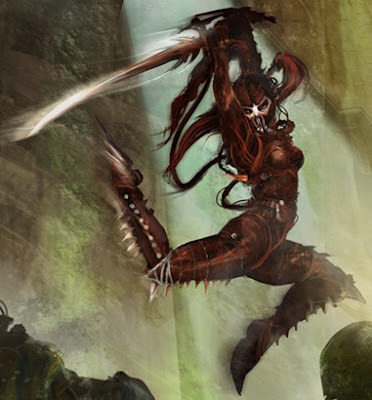
Review time! My Inquisitor Czevak novel Atlas Infernal has been out a little while now, so it's always nice to read reviews about it from people who have come to it recently. EJ Davies casts his unswerving, critical eye on it today with a review first appearing on that nexus of literary judgement and appreciation - The Founding Fields. For daily updates, opinion and reviews, you can check out The Founding Fields here. EJ Davies' blog contains a plethora of science fiction cinema and literature reviews and can be found here - but just in case you forget, it's on the list of noteworthy internet locations and hang-outs called 'The Scene' on the side bar. Lots of worthy sites to investigate there but first check out EJ Davies' review of Atlas Infernal below.
"Rob Sanders introduces a new character to the more contemporary Black Library releases – Bronislaw Czevak – and tackles a fairly weighty topic – the thievery of the fated Atlas Infernal, a map of the Eldar webway from the Black Library of Chaos. EJ Davies casts his eye over the tome. Rob Sanders book, not THE Atlas Infernal.
“From a slow start to a scintillating, original and captivating read.” ~ The Founding Fields.
From the Black Library:
“Inquisitor Bronislaw Czevak is a hunted man. Escaping from the Black Library of the eldar, Czevak steals the Atlas Infernal – a living map of the Webway. With this fabled artefact and his supreme intellect, Czevak foils the predations of the Harlequins sent to apprehend him and thwarts his enemies within the Inquisition who want to kill him. Czevak’s deadliest foe, however, is Ahriman – arch-sorcerer of the Thousand Sons. He desires the knowledge within the Black Library, knowledge that can exalt him to godhood, and is willing to destroy the inquisitor to obtain it. A desperate chase that will bend the fabric of reality ensues, where Czevak’s only hope of survival is to outwit the chosen of Tzeentch, Lord of Chaos and Architect of Fate. Failure is unconscionable, the very cost to the Imperium unimaginable.”
Rob Sanders has had a rise akin to the meteoric within the Black Library. Although having published in Inferno! magazine, he first came to my attention with short story The Long Games at Carcharias (available as part of the Victories of the Space Marines anthology), then punched me in the face with the wonderfully refreshing The Iron Within (available in the Age of Darkness anthology.) Redemption Corps I remember being published prior to my first Black Library Live! visit in 2010, though I haven’t yet got to reading it, but my highly favourable reviews for The Serpent Beneath (in The Primarchs) and Legion of the Damned make it a certainty. Moreover, having gone from writing Guard, to Inquisition, to Space Marines, to pre-heresy in just a few short novels is worthy of note – hence my use of the ‘meteoric’ moniker.
The story is, as you would expect from the author of Alpha Legion, complex and filled with more twists than a bowl of spaghetti. Czevak, an ancient Inquisitor, in the midst of a conclave where he antagonises practically every other Ordos is turned on by a Deathwatch squad seeking to prevent him from learning the secrets necessary to transfer the God-Emperor’s essence into another vessel. During the attack Harlequins intervene and pull Czevak into the webway, and imprison him in the Black Library. Years later his former acolyte, Klute – now an inquisitor himself – has been hunting his former mentor across the Eye of Terror, accompanied by his retinue: a drug addicted warp seer, Epiphani; a bound daemon, Hessian; a Relictors Techmarine, Torqhuil – themselves famous for using daemon-technology against the daemons; and the indentured rogue trader Captain, Torres. They discover and secure an Eldar warp gate through which emerges, you guess it, Bronislaw Czevak brandishing the famous Atlas Infernal.
The book itself is not set up as a stereotypical book. Each chapter is another ‘scene’ in an overarching ‘act’ and at the opening of each is the word Enter, followed by a cast of characters. In this respect there are similarities with plays, or epic poems, but what I think Rob has tried to do is to tie this feature in to the Harlequins lore, the fact that as servants of the Laughing God they – through the medium of performance – recount tales of the past, present, and events yet to come. Between each act is a flashback to Czevak’s past which further develop the story as a whole, and our understanding of Czevak, and the unfolding story. Also, as you read the book, although the acts are chronological, some of the flashbacks feel less so – as if we are travelling through warpspace and experiencing time as we would there – in pockets of random happenstances.
Rob’s technique and style is clearly evident. Dialogue is not high on the priority list, but when it does appear it is colourful, playful, and complimentary to its characters. Particularly Czevak has a delightfully honest and open manner, often disarmingly so; and often displays humour you wouldn’t think credible coming from an Ordo Xenos High Inquisitor – but it works. There is a long (and I mean long) prologue that seeks to set the piece, and it’s only really in the context of its structure does that work. If this were a traditional novel, for example, I’m not sure a lengthy prologue would be welcomed.
The characters are delightful. The doped up warp seer is a treat, as much as a clothes horse as anything else, and for the fact she has a floating cyber-skull for a familiar (it’s that of her father, which is called Father) which reminds me of Janeane Garofalo’s Baby Bowler in Mystery Men. Hessian, the daemonhost, spends much of his time asleep, or as a bipedal torch, which tickled me no end. Klute, resolute and sturdy, though operating far outside the realms of his remit and, much like Torqhuil, makes him a target of less than tolerant beings throughout the Imperium.
The whole book is framed against that of constant peril, and relentless confrontation – right from the off. The Inquisition, the Eldar, the attentions of the Thousand Sons; and the distrust and animosity within the group. It’s a part Indiana Jones style adventure, mixed with a film noir murder mystery, with some monster movie tropes thrown in and it makes for a thoroughly entertaining read, which I’ve really enjoyed, albeit with a single reservation – that of it being a little tough to get in to. Rob is a very descriptive author with colours, smells, weather, personality, history, charm, charmlessness, and scale in every location and every encounter; and sometimes that can get a little wordy. That said, I’d rather have too much, than too little.
Some things of note, then: First, there is a scene in a bazaar where Czevak and his crew go to find an acquaintance and track down some necessary materials: brilliantly written to the point you feel you’re in Marrakech. Second, in another chapter they go to a planet in search of a coin – the whole culture of the gypsies – wonderful idea, and nicely executed. Thirdly, the interstitial scenes are brutally visceral and it’s a real talent to use these to further colour characters already in play. Finally, the final confrontation is one that I didn’t see coming; and the layers of complexity to enable us to get to this stage really pay off.
Atlas Infernal is an excellent read, with some great features. I’m very glad I got around to this, and it’s sheer entertainment value is worth the price of purchase. Atlas Infernal is available as an eBook download from Black Library, or in print from retailers.
Share and Enjoy!"
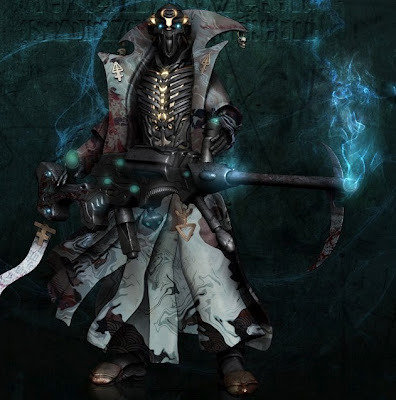
Published on July 04, 2012 04:17
July 2, 2012
Electronic Shoeboxing #6

As I traverse the expanse of the internet like a digital hawk, I often spot snippets of discussions regarding Warhammer 40,000 literature. They are often part of larger conversations on social media, forums or in the comments sections of blogs. Sometimes they are even about little, old me. When I find such material, I use my digital claws to rend extracts from their locations and carry them back to my nest here. Today I have some insights from fellow teacher JD Dunsany on Legion of the Damned. JD also loves to write about the 40k setting and can be found shooting the breeze on The Black Library Bolthole.
“Legion of the Damned is just... epic.
Now, on to dour fatalism. Legion of the Damned is, the works of Dembski-Bowden notwithstanding, perhaps the closest I've come to my 'ideal' 40K SM literature - it's brutally inventive, steeped in the baroque culture of Space Marine Chapters (which consequently means that the central characters - Kersh, Ezrachi and Skase, in particular - feel both comprehensible and suitably removed from 'normal' human experience) and, perhaps most importantly of all, intelligently and imaginatively written. Sanders is the king of the compound neologism. I've just read, for example, of Kersh's bolters turning cultists into "a celebratory display of gore-spritz and screams"; earlier on, a downed Thunderhawk is a "crash-mangled mess". Slain daemons return to the warp in "corkscrew[s] of hate-spitting flame". Arguably, Sanders at times overdoes it (the sentence containing "torso-punching, head-blasting, limb-shearing broadside of bolts, bullets, light and devastation" made me smile wryly) but this is 40K, for crying out loud - the setting demands a literature of gothic excess and this is what Sanders delivers in spades. It is, indisputably, profoundly impressive.
And like all good 40K writers, his pacing is almost preternaturally precise - the character beats interspersed between swathes of brutal violence are exceptionally well done, Kersh's first person present tense inserts being particularly impressive and immediate. Arguably, there's nothing too new here - we've seen Space Marines having to cope with the burden of failure before, and we've certainly seen the Rourke's Drift scenario played out on numerous 40K battlefields, but it's Sanders' attention to detail, his willingness to explore the politics between the Imperium's disparate factions in a logical and entertainingly imaginative way (Chapter Five is perhaps my favourite of the book's first half) and his control of both the pacing and description of hardcore huge-scale slaughter that make this novel so damned... ahem... delightful.
Throw in echoes of a conventional ghost story and you've got something really quite special. I'm enjoying it immensely. Legion of the Damned has been finished. And it's been a profoundly satisfying read. *raises a metaphorical glass to a man who manages not only to run an English Department but also produce fiction of outstanding creativity and excitement while he does it* Here's to you, Mr Sanders.”
Thanks JD. Here’s to you, too!
Published on July 02, 2012 12:18
Electric Shoeboxing #6

As I traverse the expanse of the internet like a digital hawk, I often spot snippets of discussions regarding Warhammer 40,000 literature. They are often part of larger conversations on social media, forums or in the comments sections of blogs. Sometimes they are even about little, old me. When I find such material, I use my digital claws to rend extracts from their locations and carry them back to my nest here. Today I have some insights from fellow teacher JD Dunsany on Legion of the Damned. JD also loves to write about the 40k setting and can be found shooting the breeze on The Black Library Bolthole.
“Legion of the Damned is just... epic.
Now, on to dour fatalism. Legion of the Damned is, the works of Dembski-Bowden notwithstanding, perhaps the closest I've come to my 'ideal' 40K SM literature - it's brutally inventive, steeped in the baroque culture of Space Marine Chapters (which consequently means that the central characters - Kersh, Ezrachi and Skase, in particular - feel both comprehensible and suitably removed from 'normal' human experience) and, perhaps most importantly of all, intelligently and imaginatively written. Sanders is the king of the compound neologism. I've just read, for example, of Kersh's bolters turning cultists into "a celebratory display of gore-spritz and screams"; earlier on, a downed Thunderhawk is a "crash-mangled mess". Slain daemons return to the warp in "corkscrew[s] of hate-spitting flame". Arguably, Sanders at times overdoes it (the sentence containing "torso-punching, head-blasting, limb-shearing broadside of bolts, bullets, light and devastation" made me smile wryly) but this is 40K, for crying out loud - the setting demands a literature of gothic excess and this is what Sanders delivers in spades. It is, indisputably, profoundly impressive.
And like all good 40K writers, his pacing is almost preternaturally precise - the character beats interspersed between swathes of brutal violence are exceptionally well done, Kersh's first person present tense inserts being particularly impressive and immediate. Arguably, there's nothing too new here - we've seen Space Marines having to cope with the burden of failure before, and we've certainly seen the Rourke's Drift scenario played out on numerous 40K battlefields, but it's Sanders' attention to detail, his willingness to explore the politics between the Imperium's disparate factions in a logical and entertainingly imaginative way (Chapter Five is perhaps my favourite of the book's first half) and his control of both the pacing and description of hardcore huge-scale slaughter that make this novel so damned... ahem... delightful.
Throw in echoes of a conventional ghost story and you've got something really quite special. I'm enjoying it immensely. Legion of the Damned has been finished. And it's been a profoundly satisfying read. *raises a metaphorical glass to a man who manages not only to run an English Department but also produce fiction of outstanding creativity and excitement while he does it* Here's to you, Mr Sanders.”
Thanks JD. Here’s to you, too!
Published on July 02, 2012 12:18
June 28, 2012
Nexus 6 (28-6-12)
It’s time for more great genre-related stuff from the digital morass that is the internet. Is it research or procrastination when I stop to read science fiction related articles on the web: probably both – but there’s some great stuff out there and I love it when people draw my attention to interesting features and geek ephemera. This is what I’ve been reading this week.
1. Philip K. Dick’s Technological Predictions
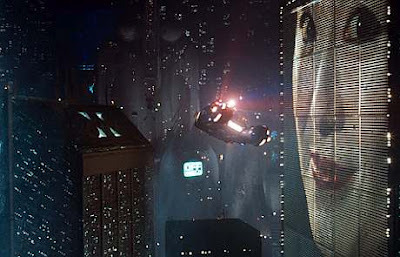
The BBC ran an interesting article examining the different future technologies presented in the fiction of science fiction author Philip K Dick and cinematic adaptations of his work (think the flying cars from Bladerunner or the iris recognition systems in Minority Report). It examines which of these technological predictions have been fulfilled. Find out more here.

2. Top 100 Science Fiction and Fantasy Books

National Public Radio asked thousands and thousands of listeners to vote for their top 100 science fiction and fantasy books and helpfully compiled a ranked list for the rest of us. The list can be found here and makes for interesting reading (ha, ha). Not content to leave it at that, SF Signal went two steps further. For your viewing pleasure they created a flow chart of the novels on the list to help readers find the books that appeal to them (it’s impressive, and can be found here) and then created an interactive version of the resource. Click here to check out the interactive gizmo.
3. Missing Misfit

I really didn’t think I’d like Misfits – and then I watched it. Sure – it was a little rough around the edges but it was fresh and adventurous and I really got into series one. The departure of some key characters in series two threatened to derail the series but ultimately the replacement characters the creators brought in did a good job of filling the gap. Now we learn that even more key characters have had to leave for series 3. Unfortunately it’s starting to sound like a promising science fiction series is falling apart before our screens – which is a shame. This time it’s Lauren Socha – who plays Kelly: the insensitive chav who could read minds and in the second series went on to inherit the genius of a rocket scientist. Kelly as a character was criminally underused in the second season and her power was a non-starter. The writers won’t get the opportunity to rescue this, however, because BAFTA winning actress Lauren Socha was arrested for racially-aggravated assault and subsequently lost her place on the show. Irony of ironies – she was sentenced to community service, just like her character in the series. Both weird and sad for the show. Perhaps Socha should use her skills to act like a thuggish chav instead of actually being one. SFX online has the scoop and many more details here.
4. Dredd
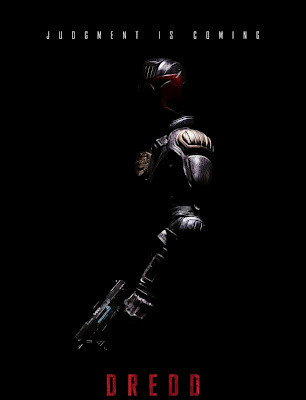
Time to check out the latest science fiction cinema releases. This week it’s Dredd – the newest adaptation of 200AD’s Judge Dredd comic strip. The action certainly seems present and the visuals look promising – although perhaps Mega-City One doesn’t look futuristic enough. Dredd’s gurn and helmet are present and correct – and there doesn’t seem to be a comedy side-kick shoe-horned in (phew!) On the downside it seems a shame that with thirty years’ worth of comic book stories to choose from, that they opted for a science fiction version of The Raid: Redemption – a Korean film made last year.
5. VI
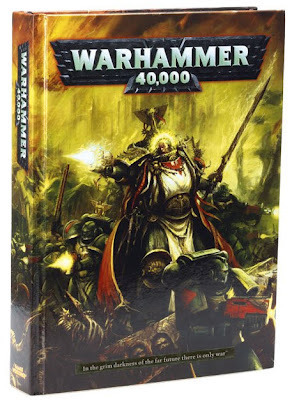
There’s always excitement when a new edition of the Warhammer 40k Rulebook is about to be released. It obviously involves a learning curve for gamers but 40k authors also have to familiarise themselves with such key hobby material. The 6th edition of the Warhammer 40k Rulebook will be released on 30th June. Check out more here.
6. Where's WALL-E?

Robots. What's not to like? Click on the meme and see if you can find him. Or should that be find 'it'?
1. Philip K. Dick’s Technological Predictions

The BBC ran an interesting article examining the different future technologies presented in the fiction of science fiction author Philip K Dick and cinematic adaptations of his work (think the flying cars from Bladerunner or the iris recognition systems in Minority Report). It examines which of these technological predictions have been fulfilled. Find out more here.

2. Top 100 Science Fiction and Fantasy Books

National Public Radio asked thousands and thousands of listeners to vote for their top 100 science fiction and fantasy books and helpfully compiled a ranked list for the rest of us. The list can be found here and makes for interesting reading (ha, ha). Not content to leave it at that, SF Signal went two steps further. For your viewing pleasure they created a flow chart of the novels on the list to help readers find the books that appeal to them (it’s impressive, and can be found here) and then created an interactive version of the resource. Click here to check out the interactive gizmo.
3. Missing Misfit

I really didn’t think I’d like Misfits – and then I watched it. Sure – it was a little rough around the edges but it was fresh and adventurous and I really got into series one. The departure of some key characters in series two threatened to derail the series but ultimately the replacement characters the creators brought in did a good job of filling the gap. Now we learn that even more key characters have had to leave for series 3. Unfortunately it’s starting to sound like a promising science fiction series is falling apart before our screens – which is a shame. This time it’s Lauren Socha – who plays Kelly: the insensitive chav who could read minds and in the second series went on to inherit the genius of a rocket scientist. Kelly as a character was criminally underused in the second season and her power was a non-starter. The writers won’t get the opportunity to rescue this, however, because BAFTA winning actress Lauren Socha was arrested for racially-aggravated assault and subsequently lost her place on the show. Irony of ironies – she was sentenced to community service, just like her character in the series. Both weird and sad for the show. Perhaps Socha should use her skills to act like a thuggish chav instead of actually being one. SFX online has the scoop and many more details here.
4. Dredd

Time to check out the latest science fiction cinema releases. This week it’s Dredd – the newest adaptation of 200AD’s Judge Dredd comic strip. The action certainly seems present and the visuals look promising – although perhaps Mega-City One doesn’t look futuristic enough. Dredd’s gurn and helmet are present and correct – and there doesn’t seem to be a comedy side-kick shoe-horned in (phew!) On the downside it seems a shame that with thirty years’ worth of comic book stories to choose from, that they opted for a science fiction version of The Raid: Redemption – a Korean film made last year.
5. VI

There’s always excitement when a new edition of the Warhammer 40k Rulebook is about to be released. It obviously involves a learning curve for gamers but 40k authors also have to familiarise themselves with such key hobby material. The 6th edition of the Warhammer 40k Rulebook will be released on 30th June. Check out more here.
6. Where's WALL-E?

Robots. What's not to like? Click on the meme and see if you can find him. Or should that be find 'it'?
Published on June 28, 2012 09:58
June 27, 2012
Soundtracks To Write By #7

It’s been a little while since I returned to this feature – so I thought it was deserving of some attention. I’m not a very musical person. I can’t sing (although I occasionally embarrass myself on Xbox ‘Lips’) and I can’t play an instrument. These abilities require a combination of skilled coordination and memory that I simply don’t have. It’s a fantastic gift, however, and I am in awe of people who do have it. While I can sit in silence with a pen, paper or laptop I find that listening to music adds a depth and a dynamic to the writing experience. Music helps to remove you from the ‘what is’ and immerse you in the ‘what might be’. It can lead to fresh ideas and directions or can simply help a scene rattle nicely off on the keyboard. I find that it is useful for putting me in a more creative frame of mind. I believe this has to do with the parts of the brain that the experience of music activates. I suspect that on some kind of scan the brain lights up like a Christmas tree when listening to music - and that some types produce very specific kinds of stimuli. Another part of this process probably has something to do with conditioning. Through repetitive action I’ve inadvertently trained my brain to quickly adapt to the needs of a creative session. Upon hearing certain kinds of music, I swiftly get into the mood to write something. This can be useful. You can’t always wait until the planets are in alignment and the wind is blowing the right direction, to begin a new project, new paragraph or new sentence.
Today we’re back to the musical genius that is Hans Zimmer. He’s highly sought after in Hollywood and with good reason. His scores can really lift a piece of cinema. Even in relatively disappointing films, his tracks often help produce memorable scenes and sequences. I’ve chosen a couple of pieces that are not only helpful in creating a more investigative, rather than action-oriented, atmosphere – but also make me feel like I’m unlocking the secrets of some kind of puzzle as actually writing. Some tracks make any activity feel epic. Try listening to these while doing a rubik’s cube or doing your tax returns: you’ll think you’ve discovered the resting place of the Holy Grail or something! They are both variations on the same tune and come from the Da Vinci Code series of films. I can take or leave these films (although there are far worse ways of spending a couple of hours) but find that the soundtracks and main theme stay with you.
Published on June 27, 2012 08:51
June 26, 2012
Want To Play Some More: Solution
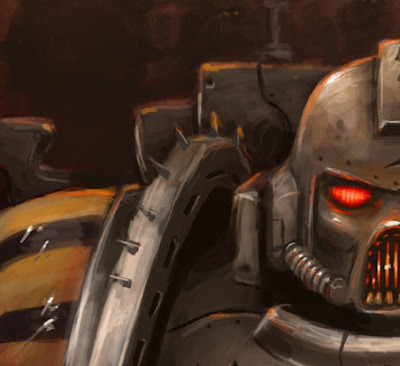
These really are popular features. Wouldn't be much fun if I left you hanging, so here is the solution to the puzzle left on the blog yesterday.
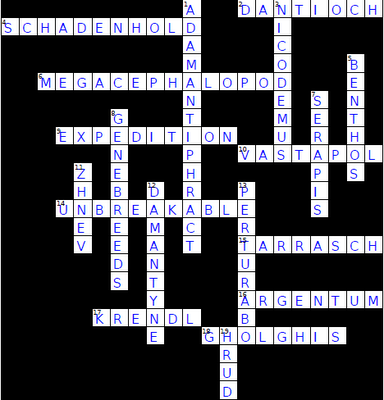
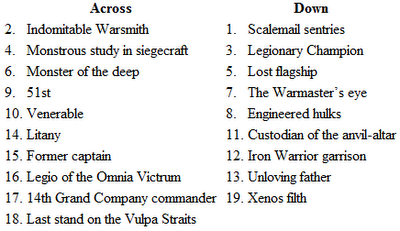
For those who have yet to check out the Horus Heresy short story The Iron WIthin, it can be found here. Here's a short extract to whet the appetite.
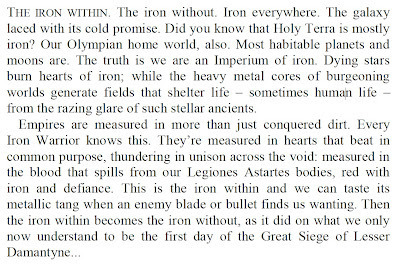
Published on June 26, 2012 10:11
June 25, 2012
Want To Play Some More?
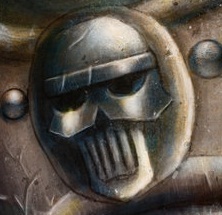 Earlier in the month we played some games on the blog and they were well received. I decided to take another shot. Something a little more difficult this time: a puzzle relating to my Horus Heresy short story The Iron Within.
Earlier in the month we played some games on the blog and they were well received. I decided to take another shot. Something a little more difficult this time: a puzzle relating to my Horus Heresy short story The Iron Within. The Iron Warriors are masters of siege warfare and fortification. Check out the Iron Warriors construction below. See if you can use the clues to fill in the blanks.
THE IRON WITHIN
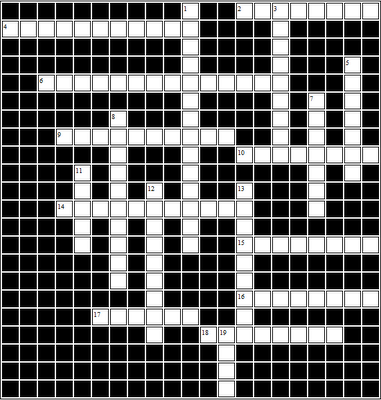
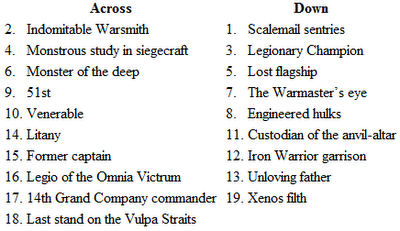
Published on June 25, 2012 10:30



